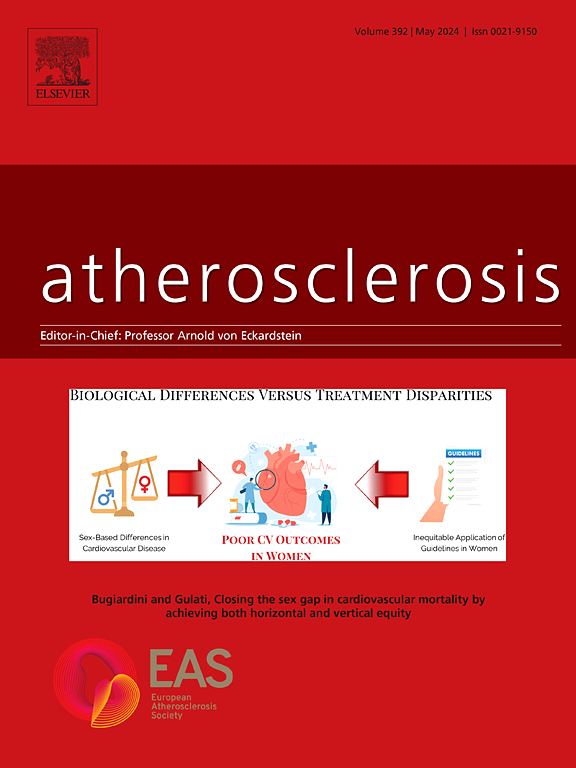RNA splicing of the STAT3 by PCBP1 promotes vulnerable plaque formation via macrophage-like phenotype modulation of vascular smooth muscle cell
IF 4.9
2区 医学
Q1 CARDIAC & CARDIOVASCULAR SYSTEMS
引用次数: 0
Abstract
Background
The increase of macrophage-like vascular smooth muscle cells (VSMCs) within atherosclerotic plaques significantly contributes to plaque vulnerability. The STAT3 signaling is crucial in maintaining the contractile phenotype of VSMCs. Recent studies have identified two isoforms of STAT3, STAT3α and STAT3β, generated through alternative splicing. However, the roles of these isoforms in VSMC phenotypic transformation and plaque vulnerability are not yet clear.
Methods
In this study, we examined the differential expression of STAT3α and STAT3β in vulnerable and stable plaque tissues, and their correlation with the content of macrophage-like VSMCs. Utilizing in vivo and in vitro experiments, we elucidated the regulatory mechanisms of STAT3 alternative splicing and the molecular mechanisms by which STAT3β induces the transformation of VSMCs into the macrophage-like phenotype.
Results
We observed a significant upregulation of STAT3β within macrophage-like VSMCs in vulnerable plaque tissues. Upregulation of STAT3β, not merely the downregulation of STAT3α, drives the transformation of VSMCs into the macrophage-like phenotype. The splicing factor PCBP1 binds to exon 23 of the STAT3 gene, suppressing the expression of STAT3β. Furthermore, STAT3β negatively regulates the expression of the acetyltransferase enzyme KAT2B, which in turn, inhibits the key transcription factor KLF4 associated with the macrophage-like phenotype.
Conclusion
Our findings provide insights into the role of STAT3β isoforms in plaque stability and the phenotypic flexibility of VSMCs, highlighting potential targets for therapeutic intervention in atherosclerosis.

求助全文
约1分钟内获得全文
求助全文
来源期刊

Atherosclerosis
医学-外周血管病
CiteScore
9.80
自引率
3.80%
发文量
1269
审稿时长
36 days
期刊介绍:
Atherosclerosis has an open access mirror journal Atherosclerosis: X, sharing the same aims and scope, editorial team, submission system and rigorous peer review.
Atherosclerosis brings together, from all sources, papers concerned with investigation on atherosclerosis, its risk factors and clinical manifestations. Atherosclerosis covers basic and translational, clinical and population research approaches to arterial and vascular biology and disease, as well as their risk factors including: disturbances of lipid and lipoprotein metabolism, diabetes and hypertension, thrombosis, and inflammation. The Editors are interested in original or review papers dealing with the pathogenesis, environmental, genetic and epigenetic basis, diagnosis or treatment of atherosclerosis and related diseases as well as their risk factors.
 求助内容:
求助内容: 应助结果提醒方式:
应助结果提醒方式:


